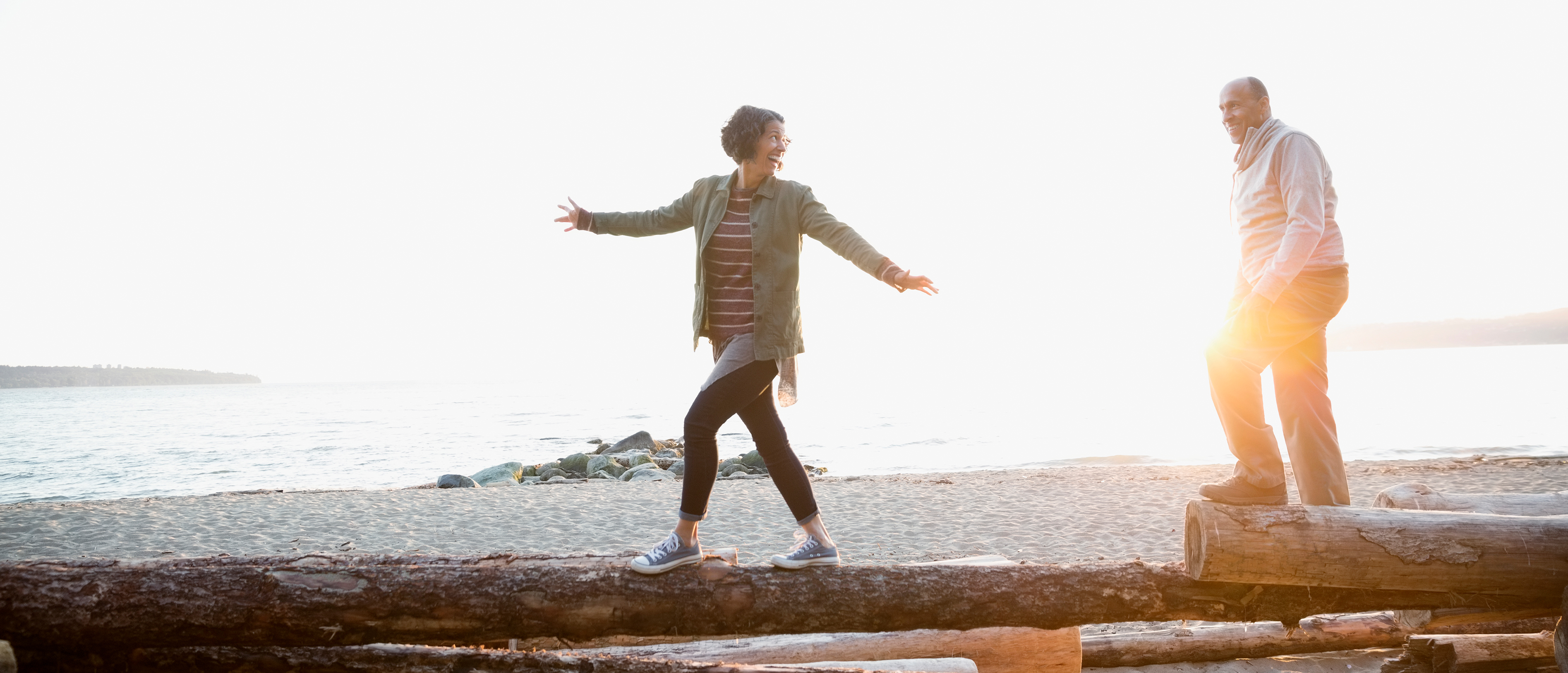The human body system - a complex picture
To maintain spatial orientation and move around safely, we not only need our balance system, but also other human body systems that have to work together seamlessly with our sense of balance:

The eyes
The eyes take in information from our environment and transmit it via the visual nerve to the relevant brain areas. The structures involved are called the visual system as a whole (from Latin videre, visum = to see).
The somatosensory system
Also important for spatial orientation is motion information that our depth sensitivity (the registering of certain stimuli from within your body) conveys to us on our position, efforts spent and movement. For this purpose, we have receptors in our skin, muscles, tendons and joints. The stimuli received there are sent to the brain as well. This is summed up under the term somatosensory system ( from the Greek soma = body; Latin: sentire, sensum = to feel)
Vestibular, visual and somatosensory information is processed in the brain as a sensation of position and space; the results are passed on to the motor system (motion system, from Latin motor = motion). In order to move safely in space, a gigantic network of structures has to collaborate – any malfunction of one detail can lead to vertigo.
Example of how various types of dizziness develop
- In order to process incoming information correctly, the brain has to be supplied with sufficient oxygen and nutrients. This requires a sufficient blood supply and a healthy metabolism – therefore, low blood pressure, for example, can cause vertigo.
- Reading in a car means that the somatosensory system registers accelerations, the eyes, however, only the stable book page. The information reaching the brain is contradictory, a fact that results in confusion and may in some person cause kinetosis (motion sickness).
- Vertigo can also originate from an inflamed balance nerve (vestibular neuritis) as a peripheral-vestibular cause.
- Various neurological disorders can be the central-vestibular cause of vertigo, where the brain is affected directly.
- The ear stones in the vestibule might come loose, drift into the canals and start irritations there, resulting in benign positional vertigo
Fact is, there are a variety of causes in connection with very different types of dizziness. At any rate, recurring vertigo attacks should be taken seriously and discussed with your physician.
Vertigoheel in your country
Please choose your country. You will leave this website and will be redirected to your local website to get more information about Vertigoheel.